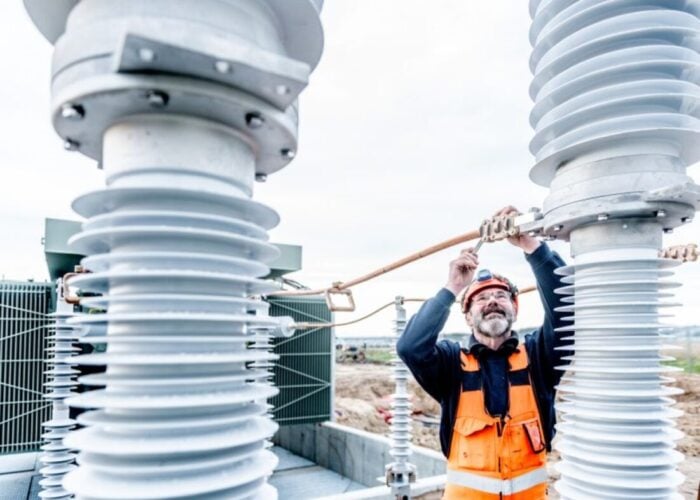Major tier one PV manufacturer, Trina Solar, is to take over operations of tier two module manufacturer, NESL Solartech, and expand capacity to 500MW.
The deal was struck with Chinese conglomerate Yabang Investment Holding Group, owners of NESL Solartech.
Unlock unlimited access for 12 whole months of distinctive global analysis
Photovoltaics International is now included.
- Regular insight and analysis of the industry’s biggest developments
- In-depth interviews with the industry’s leading figures
- Unlimited digital access to the PV Tech Power journal catalogue
- Unlimited digital access to the Photovoltaics International journal catalogue
- Access to more than 1,000 technical papers
- Discounts on Solar Media’s portfolio of events, in-person and virtual
The new joint venture will be called Changzhou Trina Yabang Solar Energy Co., Ltd. Trina Solar will hold a 51% stake and Yabang Group will have a 49% interest. The facility will be managed by Trina Solar management, according to a statement.
Trina Solar said that the total investment by both companies would be approximately US$45 million, a sum that will be used for capital expenditure and working capital requirements.
NESL Solartech had a PV module nameplate capacity of 400MW, which under the JV investment is expected to be increased to 500MW before the end of 2014.
Jifan Gao, chairman and CEO of Trina Solar said: “As we expect the demand for solar modules will continue to grow, particularly in China, Japan and emerging markets, the joint venture will strengthen Trina Solar's market position by delivering much needed extra module production capacity.”
Trina Solar like the majority of tier one rivals in China are running at almost full capacity as market demand booms in China, Japan and the US.
According to Finlay Colville, vice president at analyst firm NPD Solarbuzz: “The announcement is a further example of the ability of leading c-Si module suppliers to increase module shipments in 2014, with minimal risk, and is another indicator of the excess capacity still available in the PV industry in China across the tier two supply base.”
Colville highlighted that the lack of back-end module assembly differentiation in China between the tiers, due to the dominance of p-type multi c-Si production in the country, opened-up the opportunities for major branded players to absorb under-utilised capacity and have little if any impact on the brand.
“Much of the tier two and tier three Chinese capacity is available on a sale or rent basis to the global tier one market-leaders. Therefore, acquisition, JVs or simply having an OEM supplier remain viable options for the next 12 to 18 months,” added Colville.
According to Colville, more of such arrangements could be on the cards, especially in light of restrained capital spending and total industry nameplate capacity around the 60GW level and ‘effective’ capacity of 45GW in the hands of tier one players.
“All of which represent bad news to the PV equipment supply chain for whom the uptick in new order intake is contingent on new fabs being built,” added Colville. “At best, minimal upgrade or maintenance CapEx will be on offer, but this is way below the level of operations needed to sustain a PV-specific tool segment within tool makers focusing on the industry,” he concluded.
Having recently detailed its module capacity levels after line upgrades and throughput improvements that effectively took annual nameplate capacity from 2.4GW to 2.8GW, Trina Solar’s module capacity now stands at 3.3GW, or 900MW higher than mid-2013.
Solar cell nameplate capacity increased to 2.6GW, providing the potential need for 600MW of outsourced cell production in 2014.







